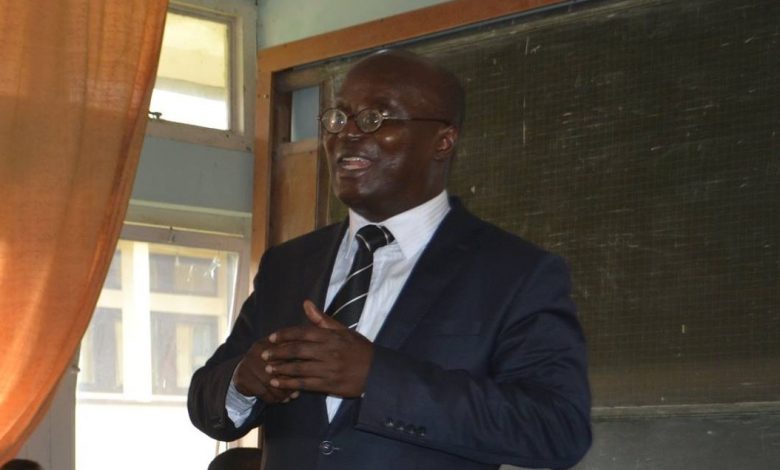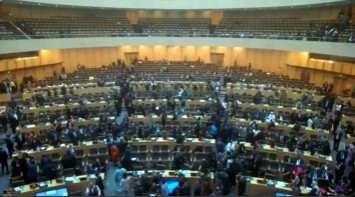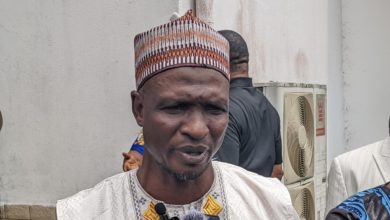Africa’s Future Lies In Innovational Learning -Professor Uwem Essia

By Professor Uwem Essia*
1. What to prioritize; human capital vs physical infrastructure development
At the 28th World Economic Forum (WEF) on Africa[1], discussants commonly agreed that unemployment is the most critical threat to the economic growth and development of African countries. A more worrisome employment issue for sub-Saharan Africa (SSA) that is hardly considered, however, is the large percentage of working youths, including higher education graduates, who can only fit into routine, low-skill, jobs that are easily eliminated as production conditions become more efficient. Hence although it may appear as employment is growing, many workers, to borrow a term from Joan Robinson, are disguisedly unemployed[2].
Moreover many development experts, especially from multilateral organizations like World Bank and International Monetary Fund (IMF), consider the challenge posed by infrastructural deficits as being more critical for SSA’s development. For instance, the World Bank notes that poorly accessed roads, telecommunications, water, electricity and other physical infrastructures impede Africa’s productivity growth by about 40 percent, and the African Development Bank (AfDB) estimates that about $170 billion need to be invested each year to fill the growing infrastructure gaps. But even if African countries were to use all their earnings to finance physical infrastructures, filling the gaps is difficult because the need to improve physical infrastructures will naturally keep expanding with economic growth. Hence, the argument here is that developing physical infrastructures is important, but should not crowd-out developing the key soft infrastructures, namely; the innovational skills and knowledge needed to ensure the productive deployment of resources for overall success of the development enterprise.
Broadly speaking, attempting to hasten infrastructural development whether with earned revenue or debt-financing has been highly problematic for many African countries. The self-financing option has caused many African countries to over-tax its already poor population. Adding high taxes to poorly funded and managed social protection services is making most families unable to feed well and provide quality education for their children. The paradox of infrastructural development in nearly all African countries, therefore, is an increasing number of highways, railways, flyovers, skyscrapers, and beautiful parks and holiday resorts (depicting glowing imageries of success), standing side-by-side with the stark realities of an overtax population with low purchasing power. Yet higher per capita purchasing power of a population is itself the most important indicator of economic growth.
Debt-financing poses even more devastating consequences. The Brooking Institution reports that about 40 percent of SSA countries are at risk of slipping into a major debt crises, and the number of African countries having or about to experience debt distress more than doubled from 8 in 2013 to 18 in 2018. As debt levels increase, so does the pressure of debt-servicing; and money that could have been invested for development goes to repaying loans. Embarrassingly also, the larger part of the loaned funds are often captured by political elites and top government officials due to weak capacity for public financial management. Even the little that is eventually spent on the projects are wasted because the capacities for implementing, and managing and maintenance of public projects are grossly inadequate. More so negotiations for most external loans and bilateral agreements are fraught with several errors due to weak capacity for win-win settlements.
Accordingly what many African countries need to prioritize is empowering the population, especially the youths, with skills needed for them to be intrinsically productive in any sphere of life or activity that they decide to engage in. But to do so deliberately with utmost commitment, African governments have to appreciate the truth that what has to be developed first are human beings, especially the youths whose energy levels and potentials are more promising. Africa’s fast-growing youthful population, therefore, offers huge development opportunities if empowered with the requisite skills to productively harness the enormous natural endowments of the continent and compete favorably in global labor and innovation markets.
2. Innovation vs industrialization
According to Alex Liu[3], in 2019 Africa took three significant steps on its journey to a stronger economic future: in March, the AU launched the AfCFTA[4]; in April, the South African government launched the Centre for the Fourth Industrial Revolution (C4IR) in concert with the WEF center in South Africa; and in September Alibaba, the WEF and others jointly launched the Africa Growth Platform (AGP) to help startups and SMEs in Africa scale their business operations by 2025[5]. Used productively the three initiatives will reverse the high mortality of early-stage enterprises in Africa, which is 13 percent higher than the global average. Many early-stage enterprises die not necessarily due to lack of physical infrastructure, but rather the absence of key soft infrastructures, especially a favorable enterprise development milieu. As rightly noted by Alex Liu a major reason for the high mortality of Africa’s early-stage enterprises is the fact that they are largely city-based and unlinked to traditional sectors especially agriculture, African Traditional Medicine (ATM), mining, produce marketing, and artisanal activities where majority of the people are engaged. It is hoped that the combination of AfCFTA, C4IR and the AGP will help nurture the broad inclusiveness and organic connectivity needed to make Africa a global hotbed of innovation. In particular, the trio will help nurture a continent-wide business environment where governments, investors and businesses help startups to thrive and become self-sustaining. However, to complement the above initiatives, African governments need to prioritize and act on the following:
- Make digital connectivity more accessible and affordable, especially in remote and poor neighborhoods where the majority of people live. This has to go alongside providing the necessary complementary services especially power supply. Where the national grid is not accessible, the people should be supported to develop and adopt sustainable alternatives like solar and biofuel energies.
- Grow the capacity of African youths to participate in the big data analytics market, forecasted to grow up to $103 billion by 2023. Data is created by every click, swipe, share, search, and stream and over 2.5 quintillion bytes of data is generated every day.
- Support broad-based foundational learning and the lifelong learning of new/innovative skills. The education ecosystem has to deliberately promote innovational learning, and jettison the subject-based industrial age learning that is fast becoming defunct. Basically, innovational learning is promoting the capacity to think, create and market simultaneously.
- Promote and facilitate the creation of “organic, multi-stakeholder ecosystems” where integrative business/learning emerges as collaborative initiatives of government, private sector, civil society organizations, and university faculties/researchers/students.
With the above conditions met, the appropriate institutional and policy environment and absorptive capacity to ensure that doing business in African countries is eased and secure will be created and nurtured. By this, attracting venture capital to fill Africa’s huge physical infrastructure gaps using different models of public-private-CSO-academia partnerships will be eased. While that happens, the population will gain from providing their services and innovating further in the process. Any industrialization strategy that is not founded on an innovative population is bound to be alien to the local resource base, and impact development much less than expected. For Ogujiuba, Nwogwugwu and Dike (2011), the absence of deliberate complementary programs for innovational learning was the tragedy of the so-called import-substitution industrialization (ISI) strategy adopted by many SSA countries in the 1980s[6].
3. Digitalization and the changing nature of work
Digitalization has rendered lifelong innovational learning indispensable. The creative destruction of skills is occurring at a very fast pace, and this is clearly unstoppable. In the new economy, it is possible for firms to scale their activities up or down quickly. Also, employers increasingly demand multiple set of new skills because new production niches and possibilities are taken on as they emerge. It is becoming difficult to clearly define the scope of a firm’s activities as the boundaries become blurred. Predominantly, digital platform firms (DPFs) evolve from local startups to global conglomerates with few employees and tangible assets, and in many cases without physical offices or factories. The DPFs pose challenges for trademark control, antitrust policies, and government regulation and monitoring, which make it more difficult for governments to determine their taxes appropriately let alone control them. The best way governments can gain more from DPFs is by empowering their citizens to compete and join the value chains. Moreover, the absorptive capacity of an economy is no longer just about good physical infrastructures – port facilities, airports, seaport, and imports/exports handling etc., – but more importantly the innovational skills of the population.
While the risk of not preparing African youths for the new economy remains high, recent successes achieved in countries like Morocco, Egypt, Mauritius, Ethiopia, and Rwanda provide useful lessons for others to learn. More precisely, the three key skills needed to build the absorptive capacity of the economy are IT-related complex problem-solving, teamwork, and reasoning/self-efficacy skills, which have to be acquired through foundational and lifelong learning. Thus, the common scenario where early education is downplayed and tertiary education prioritized is now counterproductive. More resources must be committed to crèche and elementary education and the best teachers should be employed at the foundational education level. Also, the idea that schooling prepares the graduates for routinized jobs is fast becoming defunct, because with the surge of artificial intelligence robots will soon takeover streamlined or routine jobs. Education that is relevant in the new economy should be able to make the learners think globally but yet locally rooted or connected. What is needed more now is understanding the local problems of one’s immediate environment, building the capacities for multidimensional thinking, knowing how to get the required information/knowledge from online sources, being venturesome, and understanding how to network with others easily.
It is also important to take the empowerment of school dropouts more seriously. Ironically many of today’s most wealthy persons were former school drop-outs, who are now able to recruit and pay high-flying university graduates. While this does not justify dropping out of school, it points to the need to render education more socioeconomically relevant and linked to the resource endowments of the relevant locality. It justifies also why alternative learning programs for out-of-school youths should be accorded as much support as formal schooling. Perhaps it is time for African governments to create dedicated government ministries or parastatals strictly for the empowerment of school dropouts and out-of-school unemployed youths.
Another reality of the new digital platform economy is the growing number of informal operators. Informality has remained high over the last two decades despite improvements in the business regulatory environment. Indeed, the share of informal workers is as high as 90 percent in some emerging economies. Informality of operations will always go alongside with labor casualization. Already the trend in many African countries is that organizations like banks, telecom providers, etc., are closing down many offices and outsourcing their services to agencies. Soon government ministries and departments will follow if they must remain productive and competitive. Noteworthy also is how the social media is growing public awareness of inequality in many countries, and gingering youths to aspire for a higher quality of life and more participation in the affairs of governments and events around them. With increased exposure to diverse information on several subjects, divergent lifestyles and habits the direction of response can be either way: where opportunities abound help them to attain their aspirations, they are likely to consciously or unconsciously contribute to development; but where mismatches of opportunities and aspirations remain high, more youths can become desperate and frustrated and poised to play disruptive roles. Thus in addition to reforming the education systems as discussed earlier, it is also necessary to set up adequately funded and soundly managed social security systems that provide a guaranteed social minimum for all persons.
4. The new economics of migration
In line with today’s digital platform economy, international migration is seen as international trade in labor. The conventional neoclassical economic static push-pull analyses is now defunct. Basically the sending countries have labor in excess to supply to the receiving countries at costs lower than what is obtainable there. The receiving countries have more activities that require additional labor at a lower cost. The social media eases the process by which the agents on both sides work out the modalities to ensure that the exchange takes place. Therefore, regardless of what the governments (of sending and receiving countries) and multilateral institutions are doing to stop international migration, it will still continue to grow as long as the supply-demand conditions remain attractive to the agents on both sides.
Also, although operated largely informally, the households in sending countries benefit directly from remittances and the opportunities for more family members to migrate as well. The government of sending countries benefit directly from the charges on remittances and indirectly from having persons who otherwise could have been unemployed/underemployed being gainfully employed. This financial and social costs of controlling/managing persons who perhaps could have been restive because they are jobless. The receiving countries gain by having cheap and unprotected workforce that often see being employed as a favor. Moreover, in the new economics of migration, trade, tourism and foreign direct investment are the channels by which international migration impacts on socioeconomic development in sending and receiving countries. Some migrants facilitate import/exports between sending and receiving countries. Tourism exchanges grow with international migration also. At the same time, the diaspora population is known to be a major supplier of funds for investment in the sending countries. Some communities of diaspora members even lobby the receiving countries to favor their homeland while distributing support/aid. Hence international migration creates benefits and linkages for sending/receiving countries beyond the labor exchange gains.
4.1. Brain drain vs brain gain
The new economics of migration renders the brain-drain arguments defunct. Once migration is contextualized as trade in labor, then the sending countries can deliberately achieve brain gain by equipping more prospective migrants with requisite skills to aid them to secure well-paying jobs globally. Given that both sending and receiving countries benefit from international migration, there is no need to criminalize it. Rather it should be properly planned/coordinated to stop people becoming desperate to travel through illegal routes. If it is considered that the migrant inflow to the advanced countries is more than is required, what has to be done is to support the sending countries with innovational learning programs that encourage the prospective migrants to engage in startups in their homelands. However, since flooding of migrants to many advanced countries is promoted by violent conflicts/insurgencies, a global policy to check the illicit sale of military weapons/small arms to non-state parties should be put in place.
Also consistent with the new economics of migration is the need for African governments to incentivize the diaspora members to invest back home. But to achieve this, it will be necessary to allow them to maintain as many nationalities as they have acquired. Indeed dual/multiple nationalities offer a comparative advantage in the new economy because it eases the prospects of moving funds and investments back to the homeland. Moreover, in the same way, that many advanced countries create programs for people of other nationalities to legally become their citizens, African countries as a matter of development policy need to create similar programs not just for Afro-Americans but for anyone considered capable to add value.
Bibliography
- African Development Bank (2018) Economic Outlook for Africa https://www.afdb.org/fileadmin/uploads/afdb/African_Economic_Outlook_2018_-_EN.pdf
- World Economic and Financial Surveys October https://www.imf.org/en/Publications/REO/SSA/Issues/2019/10/01/sreo1019
- Liu A (2019) Africa’s future is innovation rather than industrialization September 1
https://www.weforum.org/agenda/2019/09/africa-innovation-rather-than-industrialization
- Ogujiuba, K, U. Nwogwugwu and E. Dike (2011) Import Substitution Industrialization as Learning Process: SSA Experience as Distortion of the “Good” https://www.researchgate.net/publication/228446853
- United Nations (2018) Migration for Structural Transformation: Economic Development in Africa Report https://unctad.org/en/PublicationsLibrary/aldcafrica2018_en.pdf
- World Bank (2019) The Changing Nature of Work World Development Report https://www.worldbank.org/en/publication/wdr2019
× Prof. Uwem Essia is currently the Technical Adviser on Projects, Programs and Fundraising at the International Association, Pan African Institute for Development (PAID), General Secretariat Yaoundé Cameroon. However, the views expressed here are entirely his own and does not in anywhere reflect that of PAID.
Pan African Institute for Development (PAID) Yaoundé, Cameroon
essia.uwem@paidafrica.org uwemessia@yahoo.co.uk
GSM/WhatsApp +237 672110387
[1] The 28th WEF was held in Cape Town, South Africa September 4 -6 2019 on the theme: Shaping Inclusive Growth and Shared Futures in the Fourth Industrial Revolution[2] Disguised unemployment describes a situation where although in active service, the workers marginal product is not greater than zero, implying that he/she can be dropped without a negative effect on productivity. Disguised unemployment creates what described in post-Keynesian economics as hidden unemployment
[3] Alex Liu is the ninth Managing Partner and Chairman of A.T. Kearney, the global management consulting firm.
[4] The AfCFTA aims to create a single market expected to generate a combined GDP of more than $3.4 trillion and benefit over 1 billion people.
[5] The African Growth Platform aims to create jobs for the two-thirds of Africa’s 420 million young people who are currently out of work.
[6] The East Asian ISI model promoted technological learning and industrial competence alongside international business, while the SSA ISI models alienated local resource markets and promoted import addiction. The key success factor for the East Asian Tigers was the will to learn, not just creating low skill jobs.




